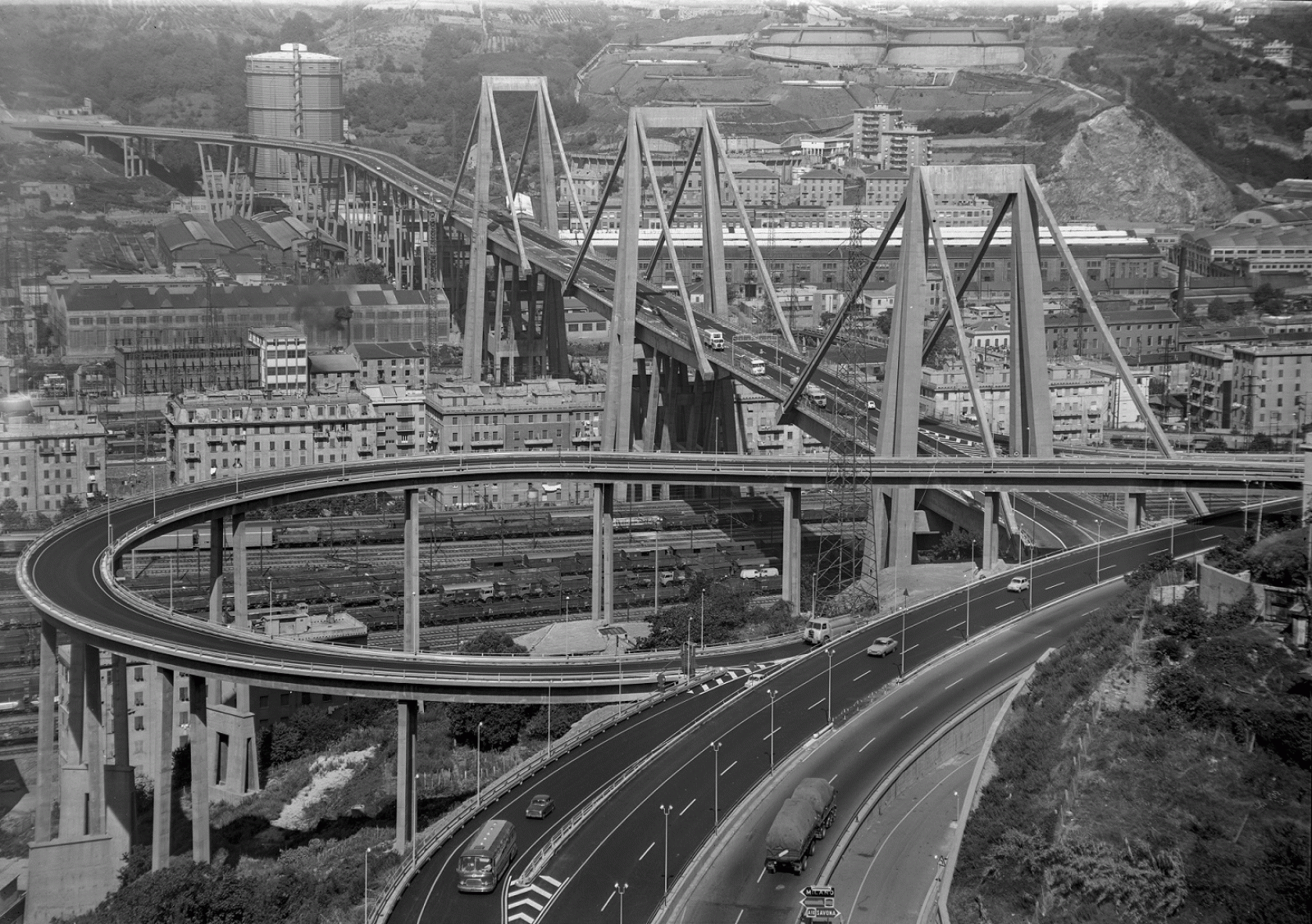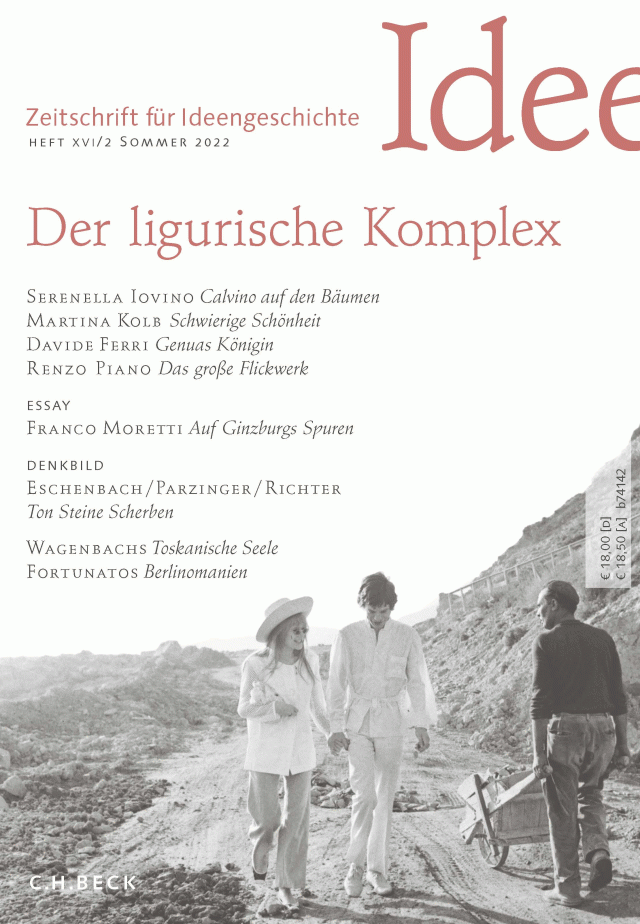Ricerca
The Ligurian Complex. Case Studies in Ecology and Aesthetics
Hannah Baader and Gerhard Wolf in collaboration with Davide Ferri

Ponte Morandi, Genoa, 1967. © Archivio Publifoto – Genova
Not only sea and mountains, but also the two mountain formations of the Alps and the Apennines collide in Liguria. Both consist predominantly of sedimentary rocks, i.e. deposits of an older ocean. Orogenesis – mountain formation – and political history in the Anthropocene thus form alliances that challenge the view of the cartography, history, and aesthetics of a “Ligurian complex.” They encompass climate, ecology, and economy, the cultivation of palm trees, lemons, and flowers, and have an impact on architectural, photographic, and literary aesthetics.
The project is interested in the political iconisation and mapping of the territory, from the republic of Genoa, and after its dissolution in 1815, as part of the Kingdom of Sardinia under the government of the Savoia. From 1828 onwards they mapped the Ligurian “landscape”, the Riviera di Levante and Ponente, as a rugged mountainous area, which almost immediately abuts the Mediterranean Sea, with steep river valleys that still today are among the poorest regions in Italy. The complex overlaying and interpenetration of horizontal, vertical, or entangled spaces in Liguria is a challenge for an art historical investigation of both the production of landscape, terraforming, the interaction of human and non-human factors, and their aesthetics.
The project examines infrastructural developments from: roads and railroads; the history of asphalting; water ways and supplies especially those in Genoa since the middle ages; early industrialization and maritime affairs (among them the grain trade from the Black Sea handled through Odessa, the import of cotton); Italian emigration to the Americas; and the simultaneous romanticization and touristification of the coast: The project also opens a dialogue with the study of literary geo-aesthetics.
Paradigmatic of the Ligurian complex is the collapse of the Ponte Morandi (opened 1967) over the Polcevera valley in 2018, which brought to a halt all freight traffic in Italy, and the construction of the Ponte San Giorgio of Renzo Piano in just two years, in both cases architectures that can also be read as eminent aesthetic gestures.



